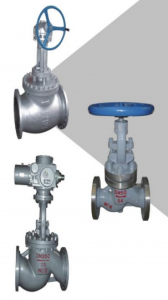▪Ethylene Propylene Diene Monomer (EPDM)
EPDM rubber is stable to most products, so it is widely used in the food industry. Another advantage is that it can be used at a recommended temperature of 140°C (244°F), but there is also a limit. EPDM is not resistant to organic oils, inorganic oils and fats, but it has excellent ozone resistance.
▪Silicone Rubber (VMQ)
The most notable quality characteristic of silicone rubber is that it can withstand temperatures from -50°C (-58°F) to approximately +180°C (356°F) and still retain its elasticity. Chemical stability is still acceptable for most products, however, soda lye and acids as well as hot water and steam may damage silicone rubber, good ozone resistance.

▪Nitrile Rubber (NBR)
NBR is a type of rubber that is often used for technical purposes. It is very stable to most hydrocarbons such as oils, greases and fats, as well as dilute alkalis and nitric acid, and it can be used at a maximum recommended temperature of 95°C (203°F). Since NBR is destroyed by ozone, it cannot be exposed to UV light and should be kept out of light.
▪Fluorinated Rubber (FPM)
FPM is often used where other types of rubber are not suitable, especially at high temperatures up to 180°C (356°F), with good chemical stability and resistance to ozone for most products, but should avoid hot water, steam, lye, acid and alcohol.
▪Polytetrafluoroethylene (PTFE)
PTFE has excellent chemical stability and corrosion resistance (it is one of the best corrosion-resistant materials in the world today, except for molten alkali metals, PTFE is hardly corroded by any chemical reagents). For example, when boiled in concentrated sulfuric acid, nitric acid, hydrochloric acid, alcohol, or even in aqua regia, its weight and performance will not change. Working temperature: -25°C to 250°C

Stainless Steel Grades
|
China |
EU |
USA |
USA |
UK |
Germany |
Japan |
|
GB (China) |
EN (Europa) |
AISI (U.S.A) |
ASTM (U.S.A) |
BSI (U.K) |
DIN (Germany) |
JIS (Japan) |
|
0Cr18Ni9 (06Cr19Ni10) |
X5CrNi18-10 |
304 |
TP304 |
304 S 15 304 S 16 |
1.4301 |
SUS304 |
|
00Cr19Ni10 (022Cr19Ni10) |
X2CrNiI9-11 |
304L |
TP304L |
304 S 11 |
1.4306 |
SUS304L |
|
0Cr17Ni12Mo2 (06Cr17Ni12Mo2) |
X5CrNiMo17-2-2 |
316 |
TP316 |
316 S 31 |
1.4401 |
SUS316 |
|
00Cr17Ni14Mo2 (022Cr17Ni12Mo2) |
X2CrNiMo17-2-2 |
316L |
TP316L |
316 S 11 |
1.4404 |
SUS316L |
Post time: Mar-14-2023
